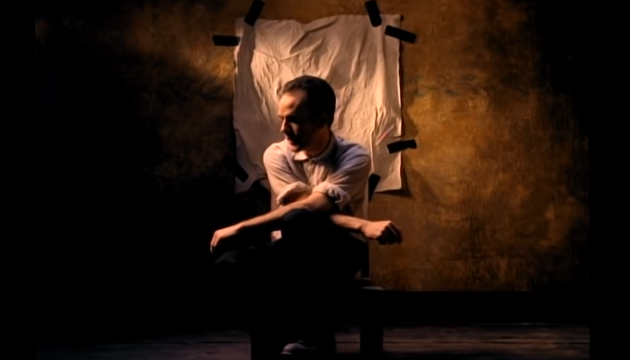I turned fourteen in December 1990. That means I spent most of 1991 at that age. I graduated from eighth grade. I started high school. I made a lot of new friends—and pivotally, I spent a fair amount of time hanging out with my older sister’s friends. I was coming of age in a lot of ways; fourteen is not an adult by most modern standards, and goodness knows it shouldn’t be, but it’s definitely an age when you’re figuring out who you are and what you like beyond the relationships of childhood. What’s also true, at least for me, is that music was changing right along with me.
There were early ripples. “Nothing Compares 2 U” feels like a sign of things to come, for me and for music, but that was 1990. For me, the album that started 1991 was The Soul Cages. Sting was mourning his father, and the music resonated with me—loss of a parent does that, honestly. Sting is a controversial figure in a lot of ways, goodness knows, in no small part because he takes himself too seriously—but he was also one of the figures leading the charge against long boxes—remember long boxes? So let’s be grateful there.
“I Touch Myself” would follow. The death of Freddie Mercury. And then Out of Time and its petition in support of the Motor Voter Act. Not to mention “Losing My Religion” and “Shiny Happy People” and “Radio Song.” Arguably it changed the world, of course, by promoting the act, but what more people likely remember it for is the music video, directed by Tarsem Singh, which would win the Video Music Award for the year and is still remembered as one of the year’s best—possibly one of the medium’s best.
Seal and “Crazy.” Bonnie Raitt and “Something to Talk About,” from the Luck of the Draw album some people I babysat for owned. Summer brought Lollapalooza for the first time. Also Into the Great Wide Open, the second Tom Petty album I would come to love. “Learning to Fly” and “Into the Great Wide Open” and “All the Wrong Reasons.” The “Into the Great Wide Open” video stuck with me, but we’ll not go into it here. I’ll even confess nostalgic fondness for Pocket Full of Kryptonite from the Spin Doctors. I like The Black Album, too, though that’s at least in part because of a good friend from the time who was a Metallica fan. “Everything I Do (I Do It For You)” got regular radio play, too, because Robin Hood: Prince of Thieves was quite the hit that summer.
It can be hard to remember that the first real rumble of grunge into the mainstream was in August, that Ten from Pearl Jam debuted a whole month earlier than its more popular competitor which we’ll get to in a minute. Actually, I’m one of those weirdos who prefers Pearl Jam. I spent months that year with “Jeremy” stuck in my head, and even today “Black” and “Alive” remain on my constant playlist, especially in my depression list.
School started—a new school, full of new people, and not just because I was starting high school. That month came two albums that would change me, one that would change the face of music. In the same week, we got Blood Sugar Sex Magick, from Red Hot Chili Peppers, and Nevermind, from Nirvana. These are of course two very different albums. But “Under the Bridge” is the finest song the band has ever produced, and that is a hill I will die on.
Meanwhile there was Nevermind. “A garage band from Seattle,” as Weird Al dubbed them, though Kurt’s from Aberdeen and is the only Washingtonian in the group. But “Smells Like Teen Spirit” changed rock. Metallica was the last big success of the heavy metal boom. At the next year’s VMA, the band would win Best New Artist and be in conflict with some of the hair metal acts. They knew their time was coming. The rise of Nirvana was the fall of hair metal.
November brought us the soundtrack of Beauty and the Beast and Enya’s Shepherd Moons. Both would be soothing standards for decades to come. Not the duet version that Peabo Bryson thinks we all care about, the Angela Lansbury. The original. Not to mention “Something There” and “Belle” and all the others, and “Caribbean Blue” and “How Can I Keep From Singing?” and Enya’s melodies. November’s a good time for such things, even in Los Angeles County.
The last really notable album of 1991 for me was Achtung Baby. Bono is in roughly the same category as Sting in a lot of ways. And in fact, for both, picking my favourite song by them is extremely difficult for me. For neither was their 1991 album the one I love most. (Probably Ten Summoner’s Tales; definitely Joshua Tree.) However, Achtung Baby does have “One,” my favourite U2 song, not to mention “Love Is Blindness” and “So Cruel,” “Mysterious Ways” and “Even Better Than the Real Thing.” It’s just that, for both Sting and U2, “my favourite album” is a high bar.
There are a few more albums that were prominent my freshman year in high school. None of which were from that year. Flood was the year before. Indigo Girls was a couple of years before that. We still played Cosmic Thing and Full Moon Fever and Disintegration. “Bohemian Rhapsody” was starting its renaissance; the next year would bring Little Earthquakes. Not to mention “I’m Too Sexy.” But it doesn’t take much comparing of the music on my computer to the big albums of 1991 to understand how my tastes would be shaped for decades to come. Heck, even The Commitments came out in 1991.
Now that I’ve opened myself a little to all of you, why not consider supporting my Patreon or Ko-fi?


